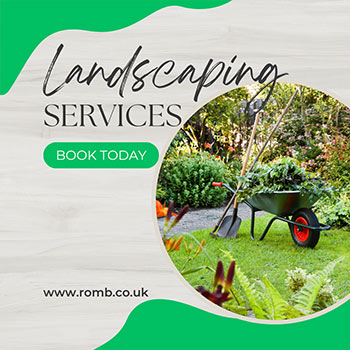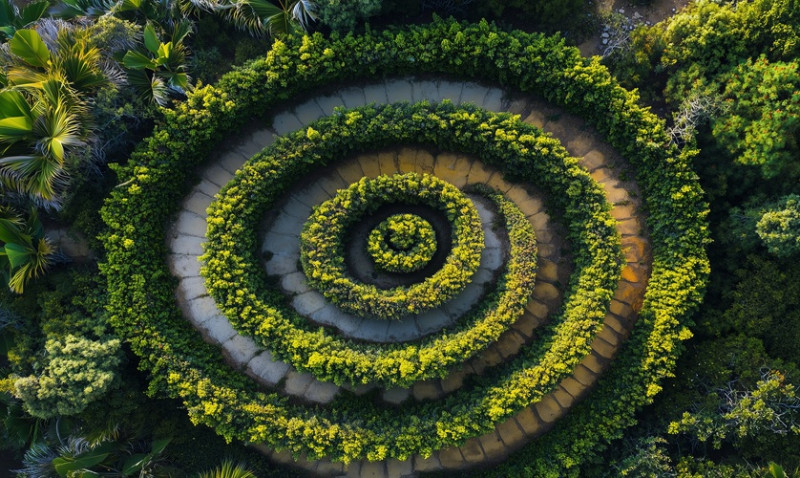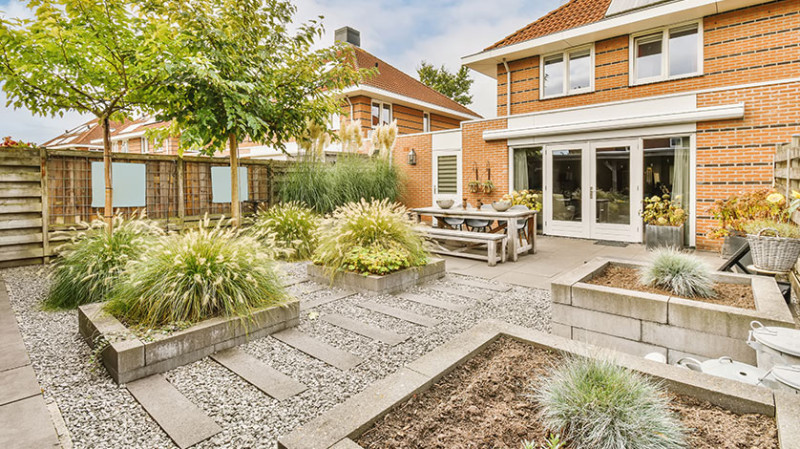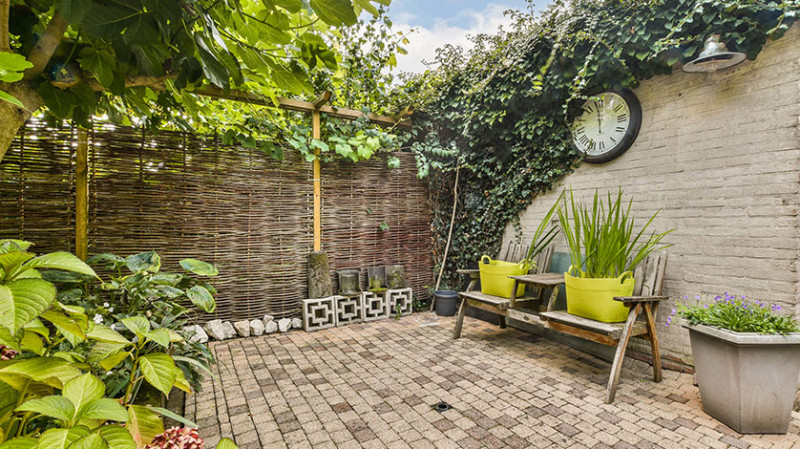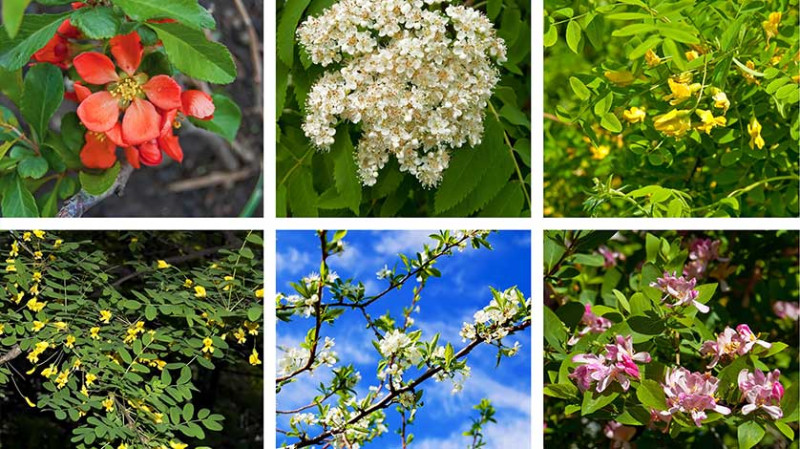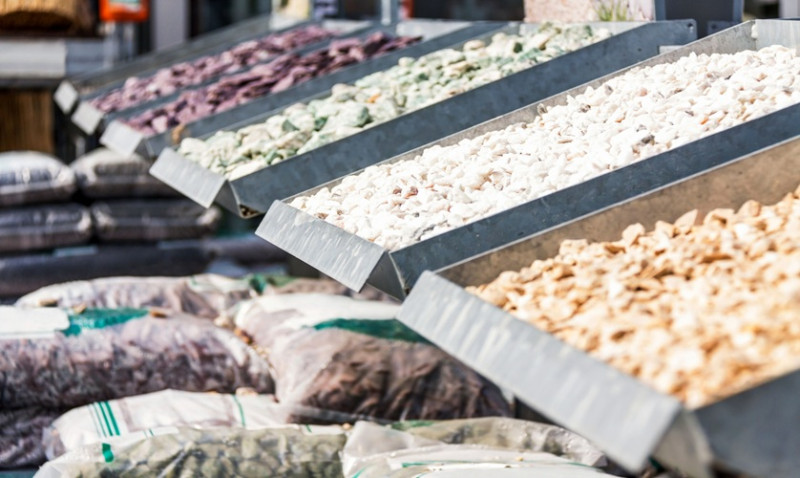
Thinking about transforming your garden or outdoor space? Choosing the right landscaping rocks is one of the most impactful decisions you can make. More than just decorative elements, landscaping rocks play an essential role in structure, texture, and functionality. Whether you’re a DIY enthusiast looking to revamp your garden, a young professional creating a relaxing space outside your home, a seasoned architect designing a new property, or a professional tradesman sourcing materials for a landscape project, this guide will walk you through 12 must-know types of landscaping rocks.
With options ranging from natural stone to coloured gravel, the UK landscaping market offers a wide range of materials perfect for various styles, budgets, and design needs. Let’s take a deeper dive into the most popular types of rocks used in landscaping today.
1. Pea Gravel
Pea gravel is a favourite among UK gardeners due to its soft texture, rounded shape, and ability to add a polished look to any pathway or garden bed. Each stone is about the size of a pea — hence the name — and typically comes in soft greys, whites, browns, or a mix of all three. Because of its size and versatility, it's great for walkways, providing a crunch underfoot and excellent drainage.
It’s also cost-effective and easy to install, making it ideal for DIYers. Many use it to fill garden beds, suppress weeds or highlight a seating area. However, it may shift over time with heavy footfall, so installing a solid edging is recommended.
Pea gravel complements contemporary and rustic designs alike. When contrasted with lawn or timber, it enhances the natural charm of your outdoor space. As a low-maintenance rock, it’s especially suitable for busy individuals who want style without too much upkeep.
2. Crushed Granite
Crushed granite is a decomposed stone with a rough texture that offers excellent drainage and a high-end natural look. It is a favourite among landscape designers for its compactibility which makes it ideal for pathways and driveways in UK homes.
Its muted tones – from grey and tan to reddish-browns – work beautifully with minimalist or traditional garden layouts. It also pairs well with plants, paving stones or wooden borders, giving you endless design combinations.
While it’s more textured and angular than pea gravel, crushed granite doesn’t shift as easily, adding stability to areas with frequent foot traffic. Just ensure to use a stabiliser or compact it properly when installing to prevent erosion or spreading over time.
3. River Rock
River rocks are smooth, rounded stones typically found in riverbeds – hence the name. They come in an array of colours from earthy browns to cool greys and off-whites. The visual softness and natural appearance make them ideal for dry riverbeds, around ponds, and water features.
They are slightly larger than pea gravel and heavier, offering more stability in rain-prone areas in the UK. Because river rocks don’t compact as easily, they help manage water runoff effectively, which is crucial in areas susceptible to flooding or pooling.
Homeowners and landscape architects alike value them for their organic look and tactile feel. Apart from aesthetics, river rocks suppress weeds very well, making gardens easier to maintain. It’s a perfect option for low-maintenance gardens and eco-conscious landscaping projects.
4. Slate Chippings
Sourced from UK quarries, slate chippings are a distinctive choice that gives a modern, structured appearance to gardens and driveways. Available in blue, plum, green, and grey tones, these flat, angular rocks reflect light subtly, especially after rain.
They’re particularly popular in contemporary landscapes and Zen-style gardens due to their sharp texture and rich hues. Light metallic tones of some slate varieties add depth to garden beds, while their flat shape makes them perfect for footpaths and edging with less underfoot movement.
Slate also has low water absorption, resisting moss and algae buildup – a common issue in wet UK climates. Designers often integrate them into borders, rockeries, and even as mulch for Mediterranean plant settings that thrive in well-draining soil.
5. Marble Chips
Marble chips are small, elegant stones that bring a bright, classic touch to your landscape design. Often pure white or lightly flecked with grey, they reflect light beautifully and offer a clean, high-contrast aesthetic perfect for framing flower beds or lining pathways.
They’re particularly popular in show gardens thanks to their decorative appeal. Used sparingly, they can uplift an entire space, adding grandeur to focal points. They’re also effective in formal garden layouts and pair well with structured lawns, clipped hedges, and symmetrical plantings.
However, marble is slightly alkaline, so avoid using them near acid-loving plants like rhododendrons or azaleas. Maintenance is key – their bright colour can become dulled by soil or leaf debris, so regular cleaning may be required to keep them pristine.
6. Basalt
Basalt is a dark, volcanic rock with a smooth texture and a range of sizes from crushed particles to large feature stones. In the UK, it is widely used in bold garden designs where contrast is desired.
This hard, heavy stone is not only visually impactful but extremely durable. It stands up well to foot traffic, weather changes, and retains its colour over time. When used in crushed form, it works well for paving, driveways, and edging – areas that benefit from robust groundcover.
Larger basalt rocks can be used as statement pieces or to outline water features. Their dark colour provides strong contrast against green foliage, white gravel, or wooden structures, helping your garden elements pop with drama and structure.
7. Granite Boulders
Granite boulders bring a sense of natural ruggedness and scale to outdoor spaces. These are often used as focal points in rock gardens, near ponds, or integrated into raised flower beds.
Every granite boulder is unique in shape and pattern, contributing visual interest to your landscape. Their durability and weather resistance make them ideal for long-term design features, especially if you’re looking for assets that age gracefully.
For DIY gardeners, using just one or two large boulders can completely redefine a space. They work excellently with ornamental grasses, creeping groundcovers, and contrasting smaller rocks or gravel paths.
8. Lava Rock
Lava rock is a porous, lightweight rock formed from volcanic activity. Typically black or rusty red, this rock is perfect for those looking to add texture and colour to the landscape without adding too much weight.
It’s very popular in urban and modern gardens due to its striking appearance and sharp, chunky texture. It also lends well to tropical plantings and desert-inspired landscapes.
Due to its porosity, lava rock offers good drainage and aeration when used as mulch or groundcover. In the UK, it’s a bold alternative to standard gravel or chippings, especially for modern homes looking to stand out.
9. Quartzite
Quartzite is a shimmering metamorphic rock available in light greys, whites, and subtle pastel tones. Its cleft texture and semi-glossy finish make it ideal for high-end projects where aesthetics are a top priority.
Often used for walkways, patios, and stepping stones, quartzite also comes as aggregate for flower beds or zen gardens. UK architects favour this stone for high-traffic areas due to its hardness and low porosity.
It’s ideal for pairing with natural timber, modern concrete slabs, or as a sparkle accent within gravel gardens. Quartzite ages well and offers durable performance with little maintenance required.
10. Cobbles
Unlike gravel or crushed stone, cobbles are larger, rounded stones typically ranging from 50–200mm in size. These are often used to edge pathways, create stepping stone trails or form dry riverbed features.
Ideal for traditional and cottage-style gardens, cobbles offer an old-world charm that can’t be matched. Their irregular shapes and variations in colour bring authenticity and character to UK gardens.
In larger projects, cobbles may be integrated into garden walls or rip-rap installations to mitigate erosion. They’re also a good alternative for mulching around large shrubs or trees where standard gravel would be too fine.
11. Flint
Flint is a native UK stone, prized for its durability, historic charm, and rugged appeal. Ranging in colour from creamy white to dark grey and even black, it has been used for centuries in British construction and landscaping.
Crushed flint offers an excellent surface for driveways and paths, particularly in coastal or chalky regions. Its rough texture provides great traction and drainage, making it suitable for rainy areas.
As a decorative stone, larger flint nodules can be used to line borders or create strong contrasts in rockeries and formal gardens. Designers and traditionalists alike value flint’s authentic edges and timeless aesthetic.
12. Recycled Crushed Concrete
As sustainability becomes increasingly important, recycled crushed concrete has become an appealing solution. Made from demolished pavements and construction waste, it provides a budget-friendly and eco-friendly groundcover choice.
This material is robust, suitable for heavy-use areas such as paths or foundations, and effective for stabilising garden structures. It's often tinted slightly grey or beige, suiting minimalist, urban, or industrial garden themes.
While it may lack the bright colours of marble or the elegance of slate, its sustainability and affordability make it ideal for utility areas, hardscaping, and groundwork projects for tradesmen and designers managing commercial and domestic sites alike.
Final Thoughts
Landscaping rocks offer the unique blend of function and visual appeal, empowering you to sculpt your garden's design, support plant life, and lower your garden maintenance. Whether you’re creating a serene Zen space, a rugged rockery, or a stylish urban courtyard, choosing the right type of landscaping rock is essential to achieving your dream outdoor space.
If you’re located in the UK and planning your next project, always consider climate, soil conditions, drainage, and design intent when selecting your rocks. And don’t forget—a little help from a local landscape supplier or professional can turn a good garden into a great one.
